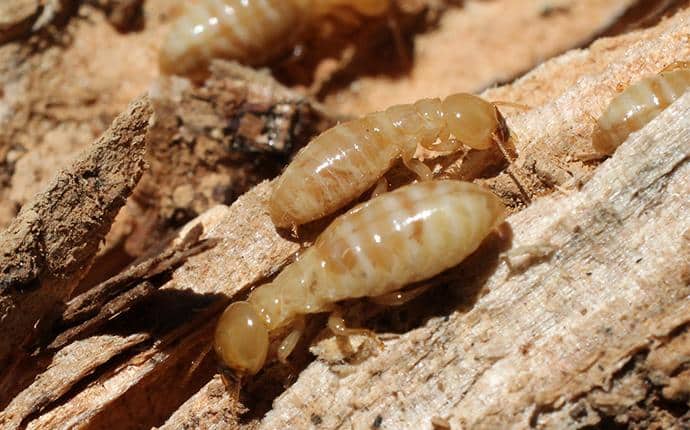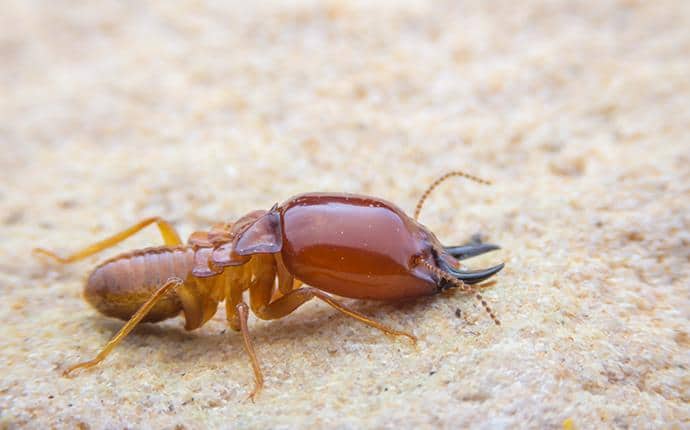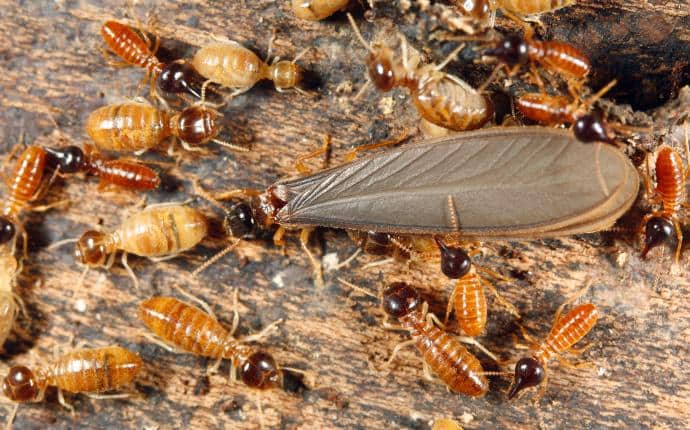Why do I have a problem with western subterranean termites?
Western subterranean termites feed on wood and other materials that contain cellulose (the main substance found in plant cell walls and vegetable fibers. If your property has fallen trees, stumps, decaying logs, or if your structure has water damaged or rotting wood, you could find yourself dealing with these wood-destroying pests. While subterranean termites prefer wood that is damaged by water, they will move on to consume sound wood and other materials, both inside and out.
What are the signs of a western subterranean termite infestation?
Mud tubes and termite swarmers or evidence of them are typically the most common or noticeable warning signs of a termite infestation.
Mud tubes
Mud tubes are like superhighways for termites and allow them to travel from their underground colonies to their food source without being exposed to air. Mud tubes extend from the ground and are often found running up the foundation or along walls.
Termite swarmers
Western subterranean termites often swarm in the spring after a rainstorm. Termite swarms occur when the reproductive members fly from a mature colony in order to mate and create a new nest; in the process, they create a termite “swarm”. Witnessing a termite swarm is a good indication that a termite colony is located near your structure or even inside it (you’d likely find piles of termite wings near window sills or on the floor).
Termite damage
In addition to the two previous signs, damage to your home or business is another indication that termites are currently active or have been active. Unfortunately, subterranean termites are very good at avoiding detection. Infestations are not usually obvious until termites have been present for some time—even years! Termite damage could be dark or blistered wood inside, wood that looks intact but that is actually thin at the surface and easily punctured, and sagging or warped floors and doors.
How do I get rid of western subterranean termites?
In order to completely eliminate a termite colony from your property, you must exterminate the entire colony, including the queen. If she’s not eliminated, the colony will continue to produce members. To ensure that all termite activity in or around your property is removed, you must partner with a pest control company that specializes in termite control.
At Prosite, we offer effective termite control services in Central Washington that actively address termites already present and create a barrier around structures to prevent new activity from popping up. To learn more about our liquid termite treatments, our termite warranty, and termite pre-treatments, please visit our termite control page or give us a call.
How do I prevent problems with western subterranean termites?
Making your property less attractive to termites is the best way to keep them away. We recommend implementing these useful prevention tips for subterranean termites:
- Reduce moisture levels inside by using dehumidifiers and properly ventilating crawl spaces.
- Fix leaking pipes, faucets, fixtures and appliances.
- Unclog gutters and make sure downspouts direct water away from the structure.
- Remove wood that has been damaged by water from your structure.
- Avoid soil to wood contact on your property.
- Remove rotting logs, piles of leaves, and other organic debris from your property that could attract termites to it.

Our Reputation Speaks for Itself!
Read Our Reviews
Serving Ellensburg, WA Since 2011
-
"Repeat Customer!"Thank you Justin for monitoring our property and communicating the pest status with each visit.- Patrick T.
-
"Great Work!"Always pleased with Prosite services.- Cindy S.
-
"Highly Recommend!"Alex was a great technician for servicing our house!- David E.
-
"Very Professional"I highly recommend Prosite. Vanessa in the office was both incredibly personable and so helpful.- Christine B.
-
"Great Experience!"Alex politely and professionally described the areas he inspected and serviced in the crawl space of our home and the exterior outside.- Jerry S.
-
"Above and Beyond!"When you've got serious problems, ProSite has the right people and products to handle them quickly!- Brett H.







